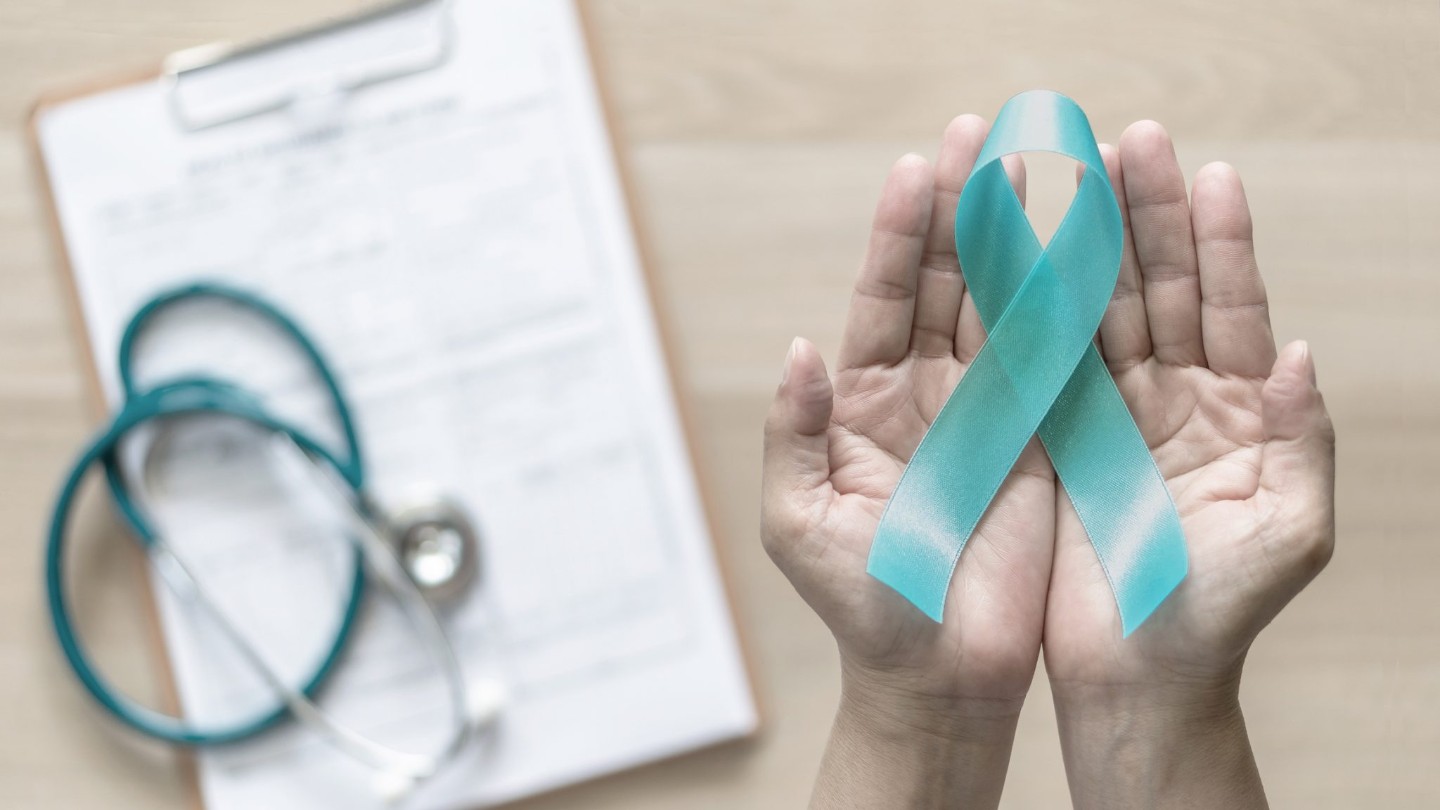Strength Training: Why it is Important for Moms
NOV 05, 2025Progressive overload means consistently challenging your muscles to do a little bit more than they're used to.
Read More
TEAL. The color of the ovarian cancer awareness ribbon. This September, my new motto comes from the color TEAL: To Empower A Lady!
Each one of you could point to a lady who has made an impact on your life in one way or another. My mother, Cindy, was that for me and many others! I know many people who say a loved one “lived life to the fullest,” but that just wouldn’t do my mom justice. She lived and loved life and all that came along with being a woman, being a daughter, friend, wife, mother, aunt, grandma (aka Mimi), and more. Cindy was unfortunately diagnosed with ovarian cancer at age 53. She was one who took her diagnosis as a challenge to learn and grow from. During her battle, she had a desire and felt an obligation to teach, encourage, and empower other women in their personal journeys. It is in her memory and honor, that I dedicate this article about ovarian cancer to help educate and spread awareness this September for Ovarian Cancer Awareness Month and To Empower A Lady!
Did you know that approximately 1 in 78 women will be diagnosed with ovarian cancer and there is NO early detection test for this disease? (OCRA, 2020). Let’s start with the basics. The ovaries are the female reproductive gland that produce eggs (ova) that will then travel through the fallopian tubes and into the uterus where, if fertilized, can attach and create a fetus.
There are actually several different types of ovarian cancer that are named after the type of cell where they derive from. There are three main cells that make up the ovary: epithelial, germ, and stromal cells. When certain cells begin to grow out of control without stopping, they can become cancer and start affecting surrounding tissue.
Because there is no specific early detection test, ovarian cancer often goes undiagnosed and is found at an advanced stage. Listening to your body, knowing your risk factors, and reporting early signs/symptoms can help diagnose ovarian cancer at an earlier stage, leading to more treatment options. Here are a few risk factors to be aware of:
Some signs and symptoms to report to your women’s health care provider if they have occurred for more than 2 weeks or are new/unusual for you include:
Even if you don’t have a worrisome family history and feel perfectly healthy, it’s important to visit your women’s health care provider annually. You can expect to answer some questions regarding your health and wellbeing, menstrual cycles, and any concerning signs/symptoms you are experiencing. Guidelines suggest having annual physical exams, including a pelvic examination, as well. If there are any concerns for ovarian cancer, typically labs are drawn (i.e. complete blood counts and tumor markers such as CA-125) and a pelvic ultrasound or CT scan can be ordered.
Contact one of our CHI Health Women’s Health providers.
References:
American Cancer Society (ACS) (2021). Ovarian Cancer. Retrieved from https://www.cancer.org/cancer/ovarian-cancer.html
Ovarian Cancer Research Alliance (OCRA) (2020). About Ovarian Cancer. Retrieved from https://ocrahope.org/patients/about-ovarian-cancer/

Progressive overload means consistently challenging your muscles to do a little bit more than they're used to.
Read More
A Nurse Practitioner answers your essential mammogram questions. Understand timing, prep, the procedure, callbacks, and financial options.
Read More
Radiotherapy is a finely tuned, powerful partner that can work with your surgery to give you the best possible outcome for breast cancer.
Read MoreWhen you need local health information from a trusted source, turn to the CHI Health Better You eNewsletter.